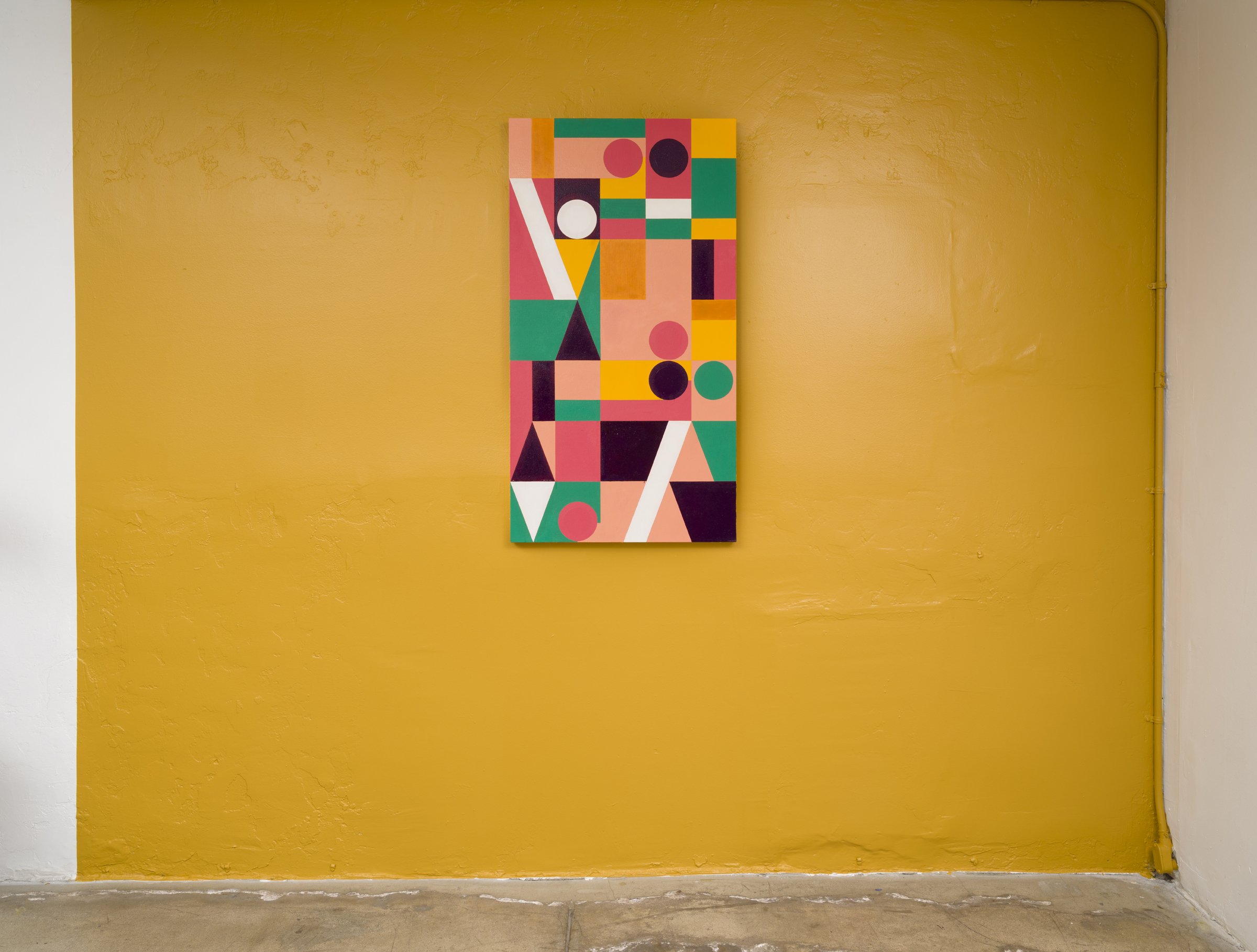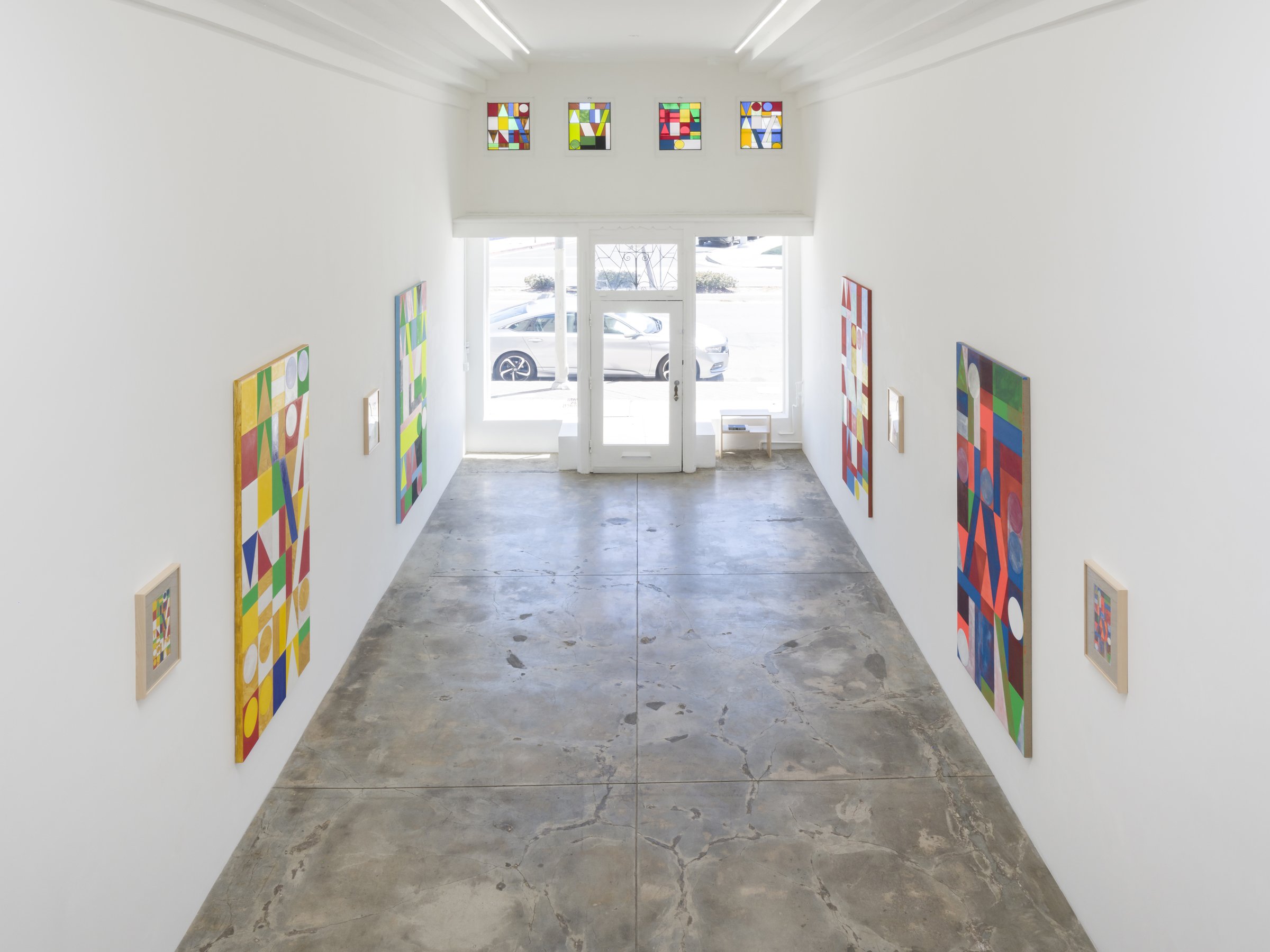Antonio Adriano Puleo
Una Cosa È Una Cosa
May 14 - June 25, 2022
Opening Reception: Saturday, May 14, 4-7pm
Installation view: Antonio Adriano Puleo, Una Cosa È Una Cosa
“Ever since I can remember I have understood the world through a tangle of language. Growing up in a bilingual home that was culturally diverse from my surroundings, I was aware of a difference from my home inside and my world outside. When I think back to my relationship with language, I’ve realized that it was responsible for the relationship I have with my inner self and the relationship that I have with abstraction.
Over the past couple of years, as I was making the works in this exhibition, time sort of suspended and morphed into an abstracted sense of demarcation. As the days became weeks, weeks became months, months became a year, and then two years, there was a different sense of space within time, a less defined sense of time—less moving around, more redundancy. A sense of suspended reality set in.
During this period, I managed to make a trip to my childhood home. This felt like a rare occasion, whereas it is typically a regular occurrence. On this trip I found a book in my father’s vast collection, Una Cosa È Una Cosa, in English “A Thing is A Thing,” a collection of short stories written by Alberto Moravia. In this collection of short stories, Moravia's main characters, alienated from society, have no desire to use words to describe how they feel. Using an existential voice, Moravia describes the world as it appears—as if it were unnecessary to use words to describe it—a thing is what it is. On the cover, the title is beautifully embossed in gold letters, and on the inside flap, an illustration of a Pegasus included in the publisher's logo. My father typically inscribed his books with his name in his signature penmanship, but I took note of this particular book, first for its title, then because my father had inscribed an entire page with a note in Italian.
"To my son Pasquale, so that through the readings of Moravia, he may realize the value of life. Just living is enough to make a man happy. We must make life art that, thanks to its fascinating beauties, can live eternally in our thoughts, meditations of the past, with the joy of the present and hope of the future. Affectionately, mamma Graziella"
He inscribed the inside of Moravia's book, as if it had been written by his mother, because he sensed the need to disengage himself from his inner life and associate with his immediate landscape. My dad immigrated to America with his family in 1966. He read to live and lived to read. His life was being transformed, and existed in two separate lives—an external life where he conformed to the norms of American society and an inner life where he reconciled with his Italian particularities.” – Antonio Adriano Puleo
Installation view: Antonio Adriano Puleo, Una Cosa È Una Cosa
Lowell Ryan Projects is pleased to present Una Cosa È Una Cosa, a solo exhibition by Antonio Adriano Puleo. The works in this exhibition explore conceptions of time, language and abstraction—particularly the ability for each to hold influence and necessity over the other. A personal index of abstract shapes that Puleo has been working with for over ten years serve as an organizational basis and catalyst for the works in the exhibition. In Una Cosa È Una Cosa, symbolism is explored in a series of works each titled after an element of time as we define it, but perhaps not how we always understand it.
Four stained glass panels each representing one of the four seasons are installed in the four windows of the upper façade of the gallery. In the main gallery space, six paintings complete with a complementary work on paper are titled after the days of the week designated for work. In the backroom of the gallery, hung on an ochre-colored wall is the seventh painting signifying the final day of the week—the day of rest and reflection. In the upstairs gallery, the months of the year are considered in a grouping of twelve paintings. Puleo’s index of abstract shapes is further echoed in a large-scale, black and white mural encompassing the full height of the far gallery wall. This motif is carried over into a custom textile that has been used to create curtains and an upholstered bench, as well as tiles that line the floor of the upstairs gallery space.
Puleo’s artistic process is defined not by singularity, but the continuation of communication across mediums. An interest in the history of language and abstraction inform his mode of production, particularly how different histories, cultures, situations, and collective experiences have defined and continue to mold how we experience image, language, shape, and form. In this exhibition, an acknowledgment of the sacred is also palpable. The historical relationship between art and religion and the reliance on each other are explored. Of particular significance to Puleo is Henri Matisse’s Chapelle du Rosaire de Vence, in which Matisse envisioned the entirety of the project, spending more than four years working on the chapel, its architecture, stained glass windows, interior furnishings, murals, and the priests' vestments. Puleo continues that art historical conversation through the works in this exhibition, a dialog with those who came before and a record for those who will follow.
Antonio Adriano Puleo was born in Boston, MA and now lives and works in Los Angeles, CA. Drawing inspiration and paying homage to various artistic sources including poetry, literature, architecture, and art history, Puleo’s abstract geometric arrangements of form and color favor interconnectedness. Through the systemic application of a personal index of abstract forms, structures are created that act as a through line from project to project so as they can communicate and also act as a gateway to the next idea. Puleo received his M.F.A. from the University of California, Los Angeles, and has exhibited at galleries and institutions including LAXART, Los Angeles, CA; Pavel Zoubok Gallery, New York, NY; Kantor Feuer Gallery, Los Angeles, CA; Cherry and Martin, Los Angeles, CA; China Art Objects, Los Angeles CA; and The East Gallery at Claremont Graduate University. His works are included in numerous private and public collections including most recently the Los Angeles County Museum of Art. His work has been reviewed and featured in many publications including Artforum, The New Yorker, LA Weekly, The Los Angeles Times, and Flash Art.
Press Release and Checklist: HERE






















